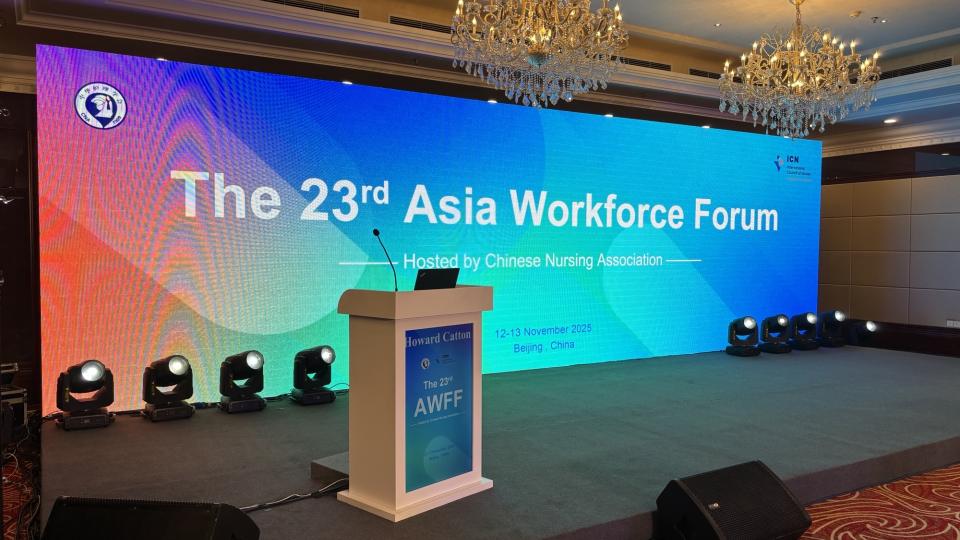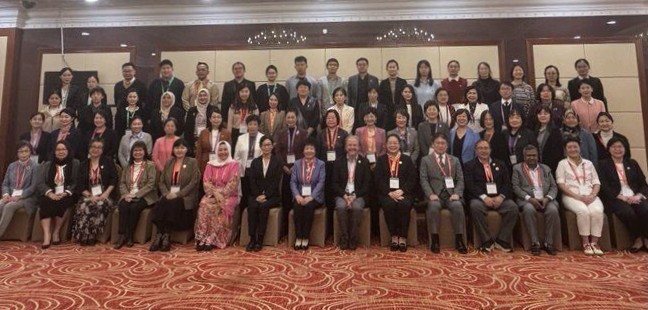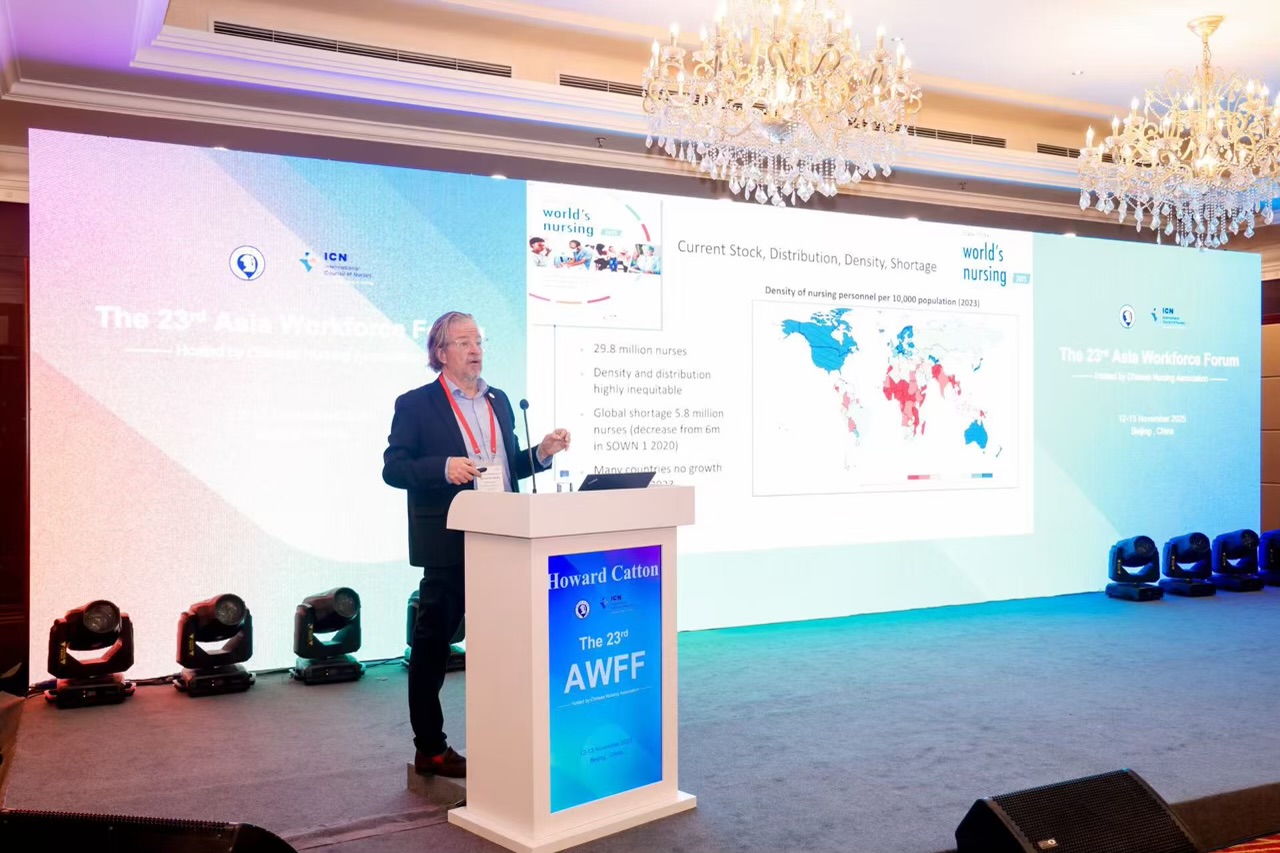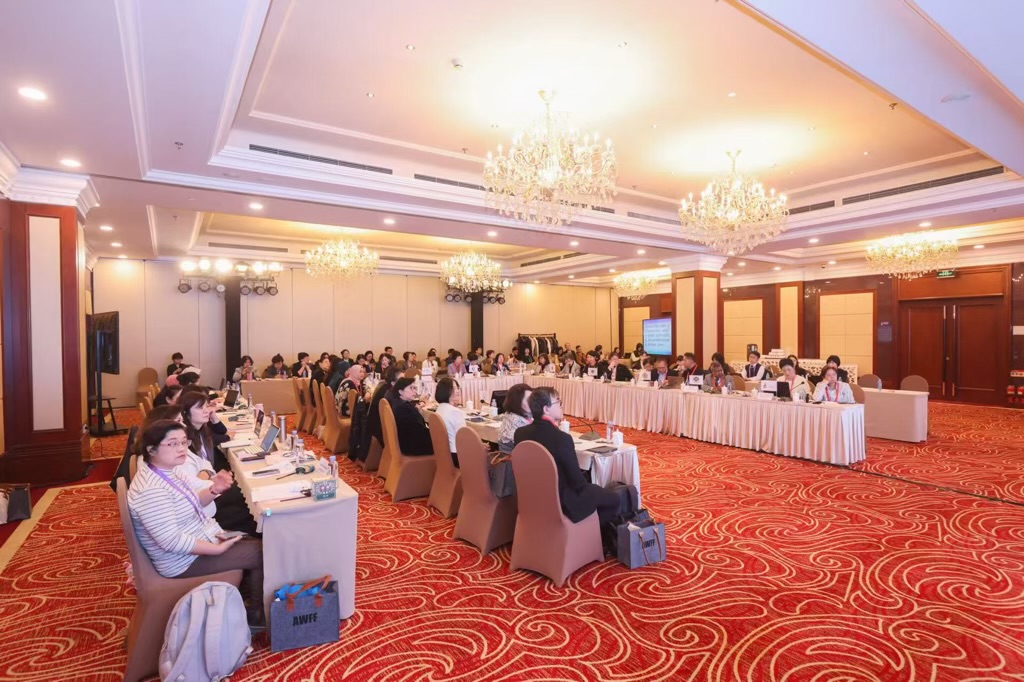Asia’s nursing leaders call for stronger national workforce planning and chart a path forward

Nursing leaders from across Asia have highlighted a critical disconnect between global commitments to strengthen nursing workforces and the reality of national-level implementation, warning that many countries lack the strategic frameworks needed to address persistent workforce shortages and advocating for urgent action and investment.

These insights emerged at the 23rd Asia Workforce Forum in Beijing, co-hosted by the International Council of Nurses (ICN) and Chinese Nursing Association (CNA), 12–13 November 2025, with ICN CEO Howard Catton in attendance. The annual Chinese Nursing Association conference, which preceded the Workforce Forum, set the tone for vital discussions around workforce development, planning, and system strengthening. At the Forum, representatives from 13 national and regional nursing associations collectively representing nearly 14 million nurses came together to exchange insights about nursing in the region and identify concrete pathways for change. Participants endorsed a Communiqué setting forth strategic actions to address the most pressing nursing workforce issues.
Chinese Nursing Association President Wu Xinjuan said:
“This Forum is more than a platform for professional exchange and dialogue. It is a symbol of unity across Asia, at a time when health systems worldwide are under pressure and our nursing workforce faces challenges. Together, we are exploring how to enhance regional cooperation, nurture leadership and retention, and harness innovation to deliver better care.”
The discussions connected global nursing data with national and regional insights and highlighted this year’s State of the World's Nursing Report (SOWN), which documents both progress and persistent gaps in global nursing workforce development. Forum delegates also welcomed the renewal of the World Health Organization’s Strategic Directions for Nursing and Midwifery (SDNMs), extended with unanimous support at this year’s World Health Assembly (WHA) as detailed in ICN’s recent WHA report.
However, as the Communiqué noted, less than half of the nursing associations present reported the existence of a national plan for nursing and where plans were in place, several were not sufficiently aligned with the SDNMs. All associations also reported persistent workforce shortages, with many highlighting uneven regional distribution of nurses. Thus, the delegates called for strong national plans developed in collaboration with National Nursing Associations (NNAs) and leaders to ensure effective recruitment, retention, and equitable deployment of nurses across all health settings.
The representatives engaged in in-depth discussions on:
- Strengthening nursing education and training capacity
- Protections against unacceptable workplace violence and improving access to mental health and psychosocial support for nurses
- Promoting nurse leadership and advanced practice and supporting professional autonomy
- Positive and innovative use of digital technology that supports nurses and transforms care
- Ethical international recruitment practices including fair and equitable reinvestment of resources into source countries
- Preparedness to support the vital role of nurses in responding to climate change, natural disasters, and conflict
- Investing in nursing, including fair salaries to combat low pay across the region, as crucial for both health outcomes and gender equality
Forum delegates collectively reaffirmed that nurses are fundamental to achieving Universal Health Coverage and the Sustainable Development Goals, emphasizing that strategic investment in nursing generates significant social and economic returns. They committed to continuing to collaborate to lead health system transformation and promote health equity across the region.

Speaking at the Forum, ICN CEO Howard Catton commented:
“The insights and analysis shared by nursing leaders across Asia speak to a clear need for investment in nursing workforces and strengthened national workforce planning.
‘The World Health Assembly extension of the Strategic Directions for Nursing and Midwifery this year was an important step. But a resolution in Geneva is a promise - a global promise - but it needs a national plan and action to turn that promise into reality. The Asia Workforce Forum delegates have called for urgent change to address workforce shortages and inequitable distribution; workplace violence and nurses’ wellbeing; and inadequate compensation that fails to reflect nursing's true value to society.
‘We have seen exceptional leadership demonstrated by nursing associations across the region and these productive discussions covered the full spectrum of progress as well as challenges. For example, digital health technologies were recognized as powerful tools to transform health systems when they are used to support, rather than replace, nurses. Our hosts, the Chinese Nursing Association, provided a positive example of significant nursing workforce growth. This 'Great Wall of Well Being' is based on political will, planning and commitment, and close collaboration between health ministries, hospitals, and universities. By improving internal workforce planning and investing in building domestic nursing capacity, countries do not only lift up their own workforces but also contribute to equity by lessening overreliance on international recruitment and migration.”
